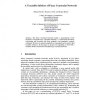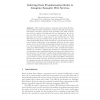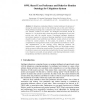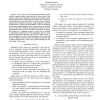267 search results - page 39 / 54 » OWL and Qualitative Reasoning Models |
EUROCAST
2005
Springer
14 years 3 months ago
2005
Springer
The Fuzzy Constraint Networks model, a generalization of the Disjunctive Temporal Fuzzy Constraint Networks, is a framework that allows representing and reasoning with fuzzy qualit...
IJCAI
2001
13 years 11 months ago
2001
The automatic generation of diagnostic decision trees from qualitative models is a reasonable compromise between the advantages of using a modelbased approach in technical domains...
SEMWEB
2004
Springer
14 years 3 months ago
2004
Springer
Abstract. OWL-S allows selecting, composing and invoking Web Serdifferent levels of abstraction: selection uses high level abstract descriptions, invocation uses low level groundi...
OTM
2005
Springer
14 years 3 months ago
2005
Springer
In ubiquitous computing, behavior routine learning is the process of mining the context-aware data to find interesting rules on the user’s behavior, while preference learning tri...
ROMAN
2007
IEEE
14 years 4 months ago
2007
IEEE
— For a robot to be able to first understand and then achieve a human’s goals, it must be able to reason about a) the context of the current situation (with respect to which i...




